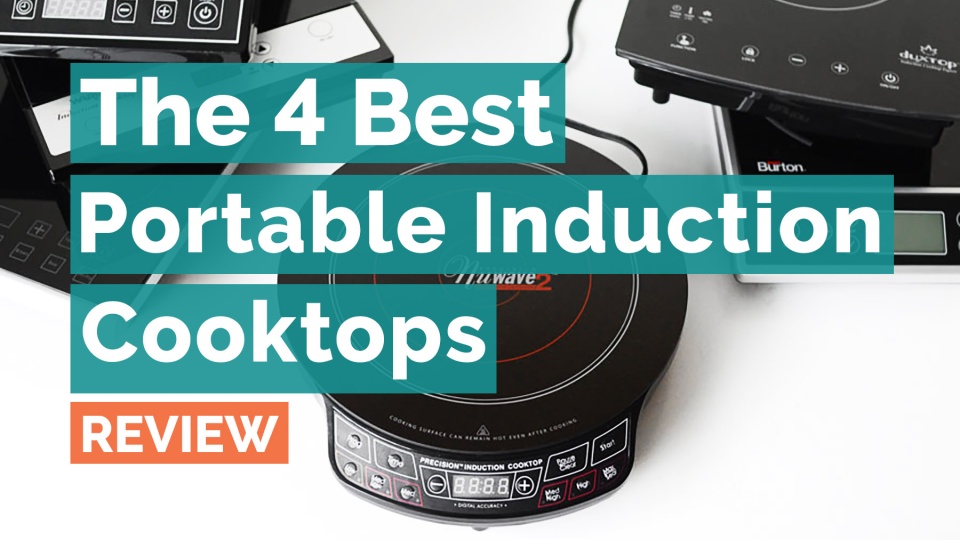
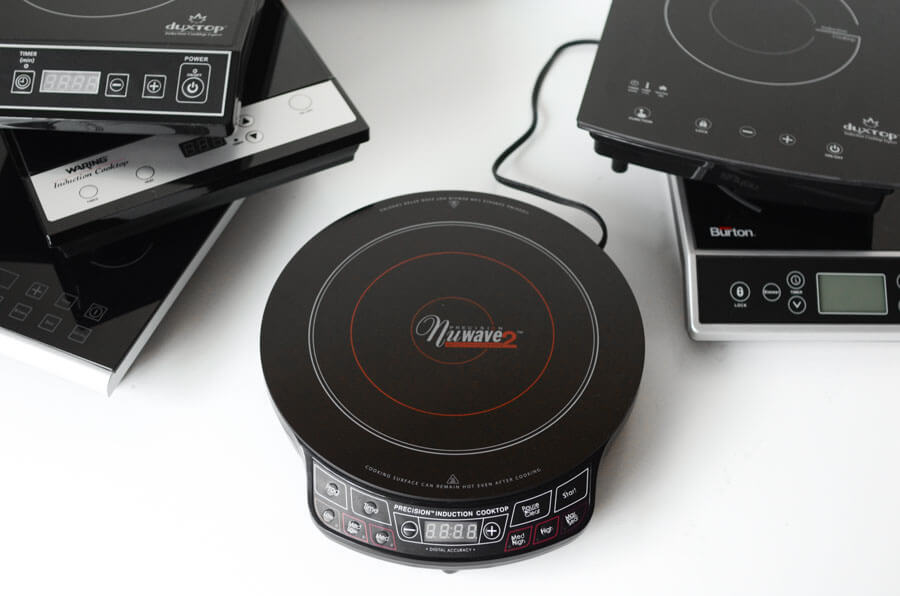
The Best Portable Induction Cooktop
We hit the kitchen for researching and in-home testing to determine which of the top-rated portable induction cooktops on the market outperformed the rest. After over 30 hours of researching and testing, we found the NuWave – Precision Induction Cooktop 2 (PIC2) to be the best portable induction cooktop for most home users.
We detail more about what induction technology is below. The Nuwave – PIC2 portable induction cooktop has all the bells and whistles, an intuitive and thoughtful design and has the robust cooking capabilities of the best gas range, if not better because it’s also a breeze to clean. It is debatable as to exactly how much energy is saved by cooking on induction over gas and electric, but there is no question that induction is more efficient in transferring direct heat to food quicker than any other stovetop method.
Performance efficiency and effectiveness is what we focused on in our testing, and we found the NuWave to be at the top of its class in speed, accuracy and ease of use, not to mention bang for your buck.
Top Pick: NuWave - PIC2
With a broad temp. and power mode range, programmable memory, built-in timer, multiple safety measures and its space-saving round design, the NuWave is a great pick at a reasonable price.
Table of contents
- How we selected finalists to test
- The six best portable induction cooktops
- Induction cooktops vs. electric vs. gas
- What type of cookware is induction-compatible?
- Important features to consider
- How we tested
- The best portable induction cooktop: NuWave
- The runner up pick: Duxtop – 9100MC
- Other finalists we tested
- The bottom line
Why induction cooktops are useful
Induction cooking is the answer to a number of cooking dilemmas. In a college dorm room with no kitchen? Want to keep some melted butter warm and close when you’re grilling your famous shrimp skewers in the backyard? Throwing a superbowl party and want to keep your nacho cheese sauce perfectly melted? Having your mother-in-law over for brunch and want to make crepes to order on the kitchen island?
Boom, boom, boom and boom. Induction can do all of these things and more. Compared to electric and gas, induction is a fast and safe alternative that is starting to even be favored in professional kitchens.
How we selected finalists to test
Our research phase began by checking out online reviews from retailers like Amazon.com, reading through articles, user reviews, reviews from chefs and watching video reviews. This gave us an idea of what consumers look for in an induction burner and what parameters to look for and test.
We noticed that the most popular cooktops were all under $200 so we started our search with units below this price point, as well as considering the most robust capabilities within each brand.
After starting our review, the Duxtop – 8300ST has stopped being manufactured. We called the manufacturer to ask about it no longer being available new on Amazon, but was told it was still in production. Upon another email to the technical support department we heard that in fact they have stopped production on this model.
After narrowing our selection a bit, we dove into the science to decide which tests we needed to perform to help us determine the best single burner induction cooktop. And finally, we headed to the kitchen, and put these cooktops to work.
We tested their speed, cool down times, temperature precision and most importantly we got cooking to determine which cooktop could turn out perfectly golden pancakes to the most discerning critic: a pancake loving, hungry four year old with a fork in one hand and syrup in the other.
The six best portable induction cooktops
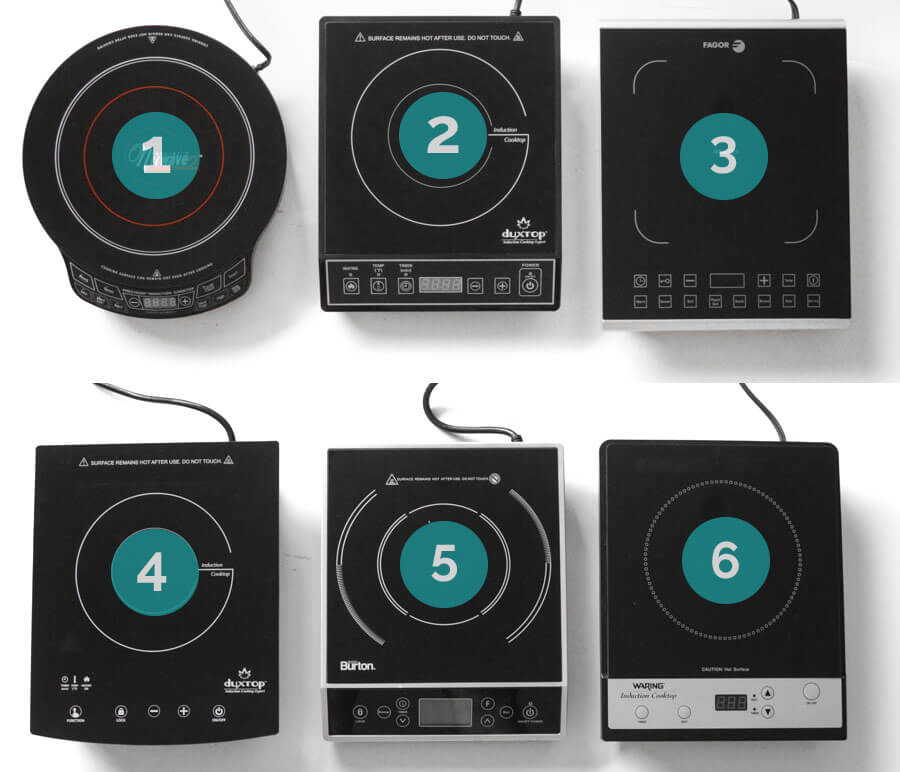
What is induction cooking technology?
We can pop a bottle of bubbly and a give thankful nod to a handful of scientists who first discovered the concept of electromagnetic induction. In the 1860s, Scottish physicist James Maxwell articulated the science into four mathematical formulas called Maxwell’s Equations. But here is what we need to know for induction cooking–where there is a changing flow of electricity, there is also a magnetic field.
Induction cooking uses this science to create a high frequency magnetic field between the cooktop and the pot or pan placed upon the surface. The result is powerful and efficient heat generation.
In our research we found over and over the phrase “induction burners don’t get hot.” This is true and misleading at the same time. When you turn on an induction cooktop, it doesn’t get hot until a pan is placed on the burner. This is because the iron in the pan activates and completes the circulating electric current which is what generates the heat.
Without the burner and pan connection, there is no current and no heat. We think it’s important to note however, that once the pan and burner meet and do their magnetic magic, the burner gets blazing hot and should be handled with the same safety measures and care as a gas or electric stovetop.
Induction cooktops vs. electric vs. gas
When comparing the various cooktops, gas has always been king for professional cooks because a fire creates instant heat and reacts quickly. Electric coil is the slowest because it takes time for the coils to heat up and it also takes time for them to cool off resulting in less control of what you’re cooking. Induction is the best of both worlds because you have that instant quick reaction of the electromagnetic connection between cooktop and pot, but you don’t have to worry about an open flame.
Energy efficiency is dependent upon a number of factors and once we started digging into comparing energy efficiency between induction, electric and gas, well that’s when things start to get a bit fuzzy. This is because the pathway from energy plant to cooktop has many stops along the way.
For instance, it is estimated by the Department of Energy that 60% of a gas flame’s energy is wasted unless the kitchen is well ventilated, as the heat will raise the temperature of the air in the kitchen. A newer study by the DOE also finds that an electric coil cooktop could be more energy efficient than induction if the pot that is used covers the entire diameter of the coil and that is just the tip of the iceberg.
There is no doubt that induction is the most efficient in transferring heat because the cooktop creates a direct connection to your cookware. There are no coils to heat up which then heat your pot like with an electric cooktop, and there is no open flame in which heat competes with air and oxygen to transfer heat from a gas range. Because of this the induction response is faster and capabilities for accuracy is greater.
What type of cookware is induction-compatible?
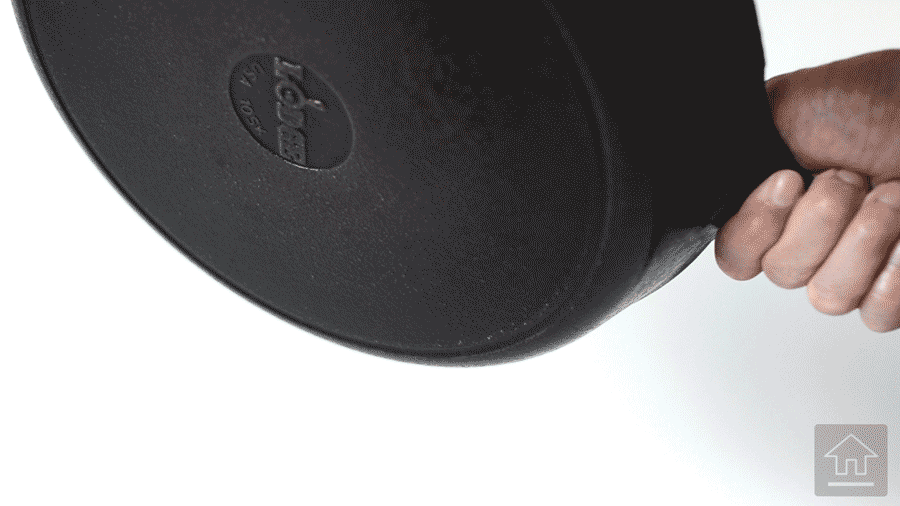
Induction friendly cookware is any cookware with iron or a high level of stainless steel present. You can easily test this by seeing if a magnet will attach to the bottom of the cooking vessel. If it sticks, it’s induction-compatible! Our top two picks on our review of nonstick cookware sets also happen to be induction-compatible.
Iron and stainless steel are ferromagnetic which means they have an unbalanced set of electrons and can be influenced by magnetic fields (the induction cooktop).
The magnetic field of the cooktop penetrates the iron in the pan and a circulating electric current is established between the cooktop and pan which activates the pan to heat. Cast iron is perhaps the easiest to identify as a sure winner when it comes to compatibility without having to test.
The other is All Clad Stainless Steel which because of their patented bonded manufacturing their Stainless Steel, d5, d7, Copper Core, B1, HA1 lines of cookware are induction friendly.
Stainless steel on its own has iron present, but is manufactured with a wide range of other ingredients in varying amounts, including nickel, aluminum, chromium and carbon. So you should always be confirmed with the manufacturer or seller that it is actually induction friendly.
Because of this, it makes it almost impossible to determine what steel pans are induction friendly unless you perform the magnet test yourself or the manufacturer confirms that it is induction friendly.
As the popularity of induction increases, cookware makers are increasingly labeling their compatible cookware “induction friendly” making it easier to identify induction cookware in stores and online.
Important features to consider
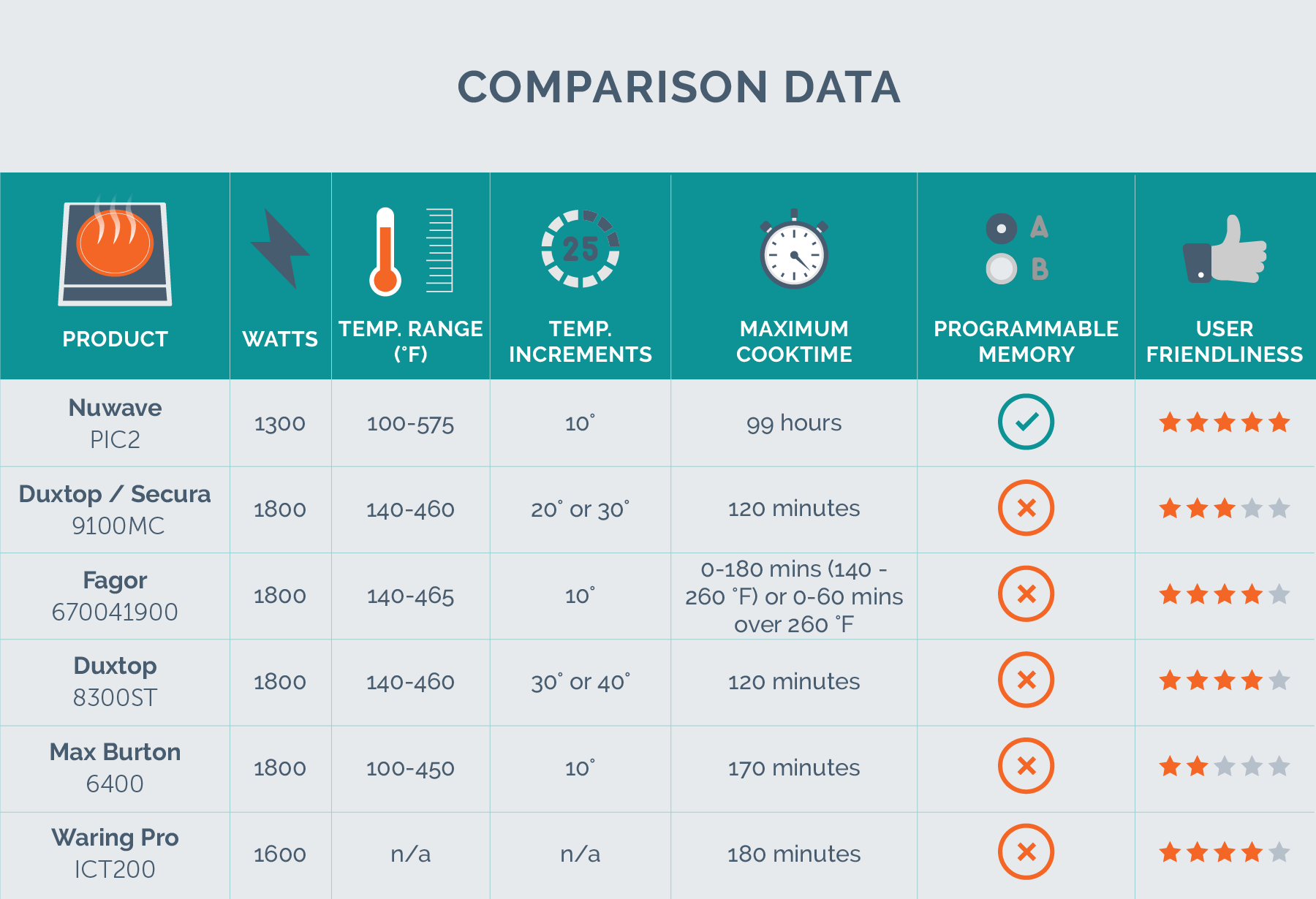
- Volts/Watts – The most common analogy that describes the functional difference between volts and watts in electricity is to think of water flowing through a pipe. In this scenario the water pressure is the voltage and the watts are the power the water could provide. The voltage for some induction cooktops are more than a typical household socket can handle, but all of the ones we tested are 120 volts. The less watts, the less electricity used.
- Temperature mode (range and increments) – The broader the temperature range, the more capacity for keeping things warm on the low end and getting that restaurant-quality sear on the high end. Through our research we discovered that the temperature increment options were the biggest indicator of cooking accuracy.
- Power mode – The power mode consists of quick buttons like “simmer” or “boil” and/or numbers of heat levels anywhere from one to ten. These are convenient for cooking where low, medium and high are enough of a cooking compass. But it’s important to keep in mind that induction does everything faster so if you get it wrong and walk away, a pot could boil over and a golden brown can quickly turn to burned. An induction burner with more temperature modes, means more temperature control.
- Safety features – There are a variety of things that could initiate an auto shut-off depending on the cooktop. From pause buttons and child locks to surface and internal temperature gauges, the more robust safety measures the better. The nice thing about induction (and this is true for all of them because of the nature of induction), is that the cooktop will not get hot unless there is a compatible pan making contact with the burner.
- Design – Does the cooktop look good on our counter? Does it take up a lot of room? Does the display panel have an intuitive design or in other words, if you’re searing a steak and want to lower the heat quickly to mount with a slab of butter and some fresh thyme, are you going to have to frantically thumb through the manual to figure it out or is it a breeze to use?
How we tested
Power – water boiling test
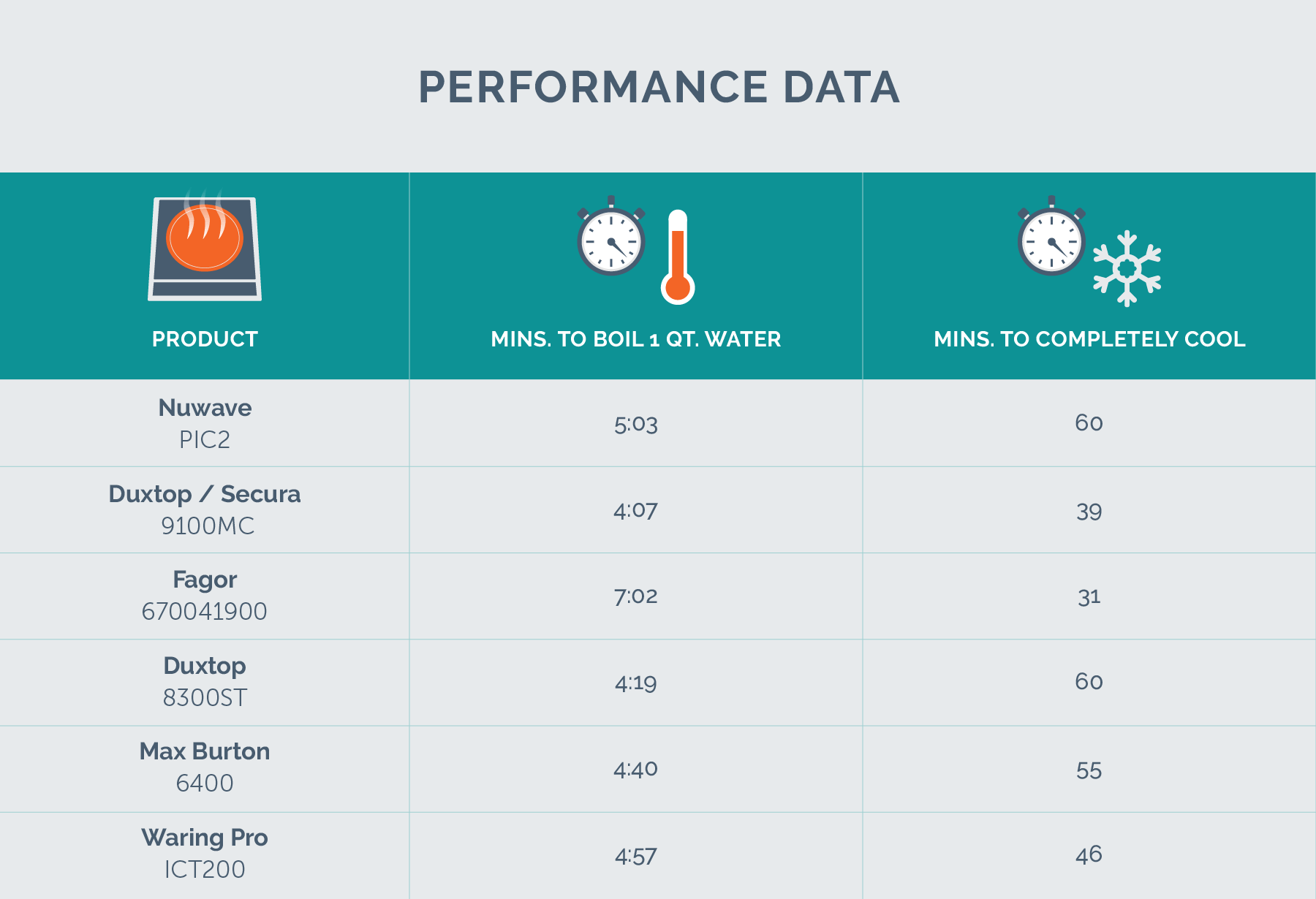
The first thing we wanted to get a sense of when comparing our induction cooktops, was how quickly each cooktop boiled water. This seemed like the easiest way to get an idea of just how fast and powerful each machine was.
It is important to note that we conducted this test in high altitude (7,000 feet). The higher the elevation, the lower the atmospheric pressure, which means the lower the temperature water will need to boil. Water boils at 212 °F at sea level.
The general rule of thumb is that for every 500 feet increase in elevation, the boiling point for water decreases approximately 1 °F. So keep in mind that the elevation where we tested may be different than the elevation where you are, so the specific times are relative. Since they are all boiling at the same elevation, the ball to keep your eye on is the difference in the time it takes to boil, despite the fact that at 7,000 feet, water boils at 199 °F.
In order to conduct this test, we used the same pot cooled to room temperature to begin. We poured one quart of 60 °F water in the pot and turned the heat to the highest level available set the timer and watched carefully. We stopped the timer when the water reached a rapid boil, meaning once the water read 199 °F on an infrared thermometer (at 7,000 feet).
We then started another timer and let the water boil for five minutes before turning the induction off, unplugging the machine and turning on another timer to see how long it took the cooktop to completely cool to the touch. At the top of this section is a graphic with results for each of the induction cooktops we tested.
When put to the test, the Duxtop – 9100MC came to a rapid boil the fastest at four minutes, seven seconds. All of the cooktops were within a minute of each other except for the Fagor – 670041900 which came to a boil at seven minutes, two seconds. The surprise came when we did the cool down test and Fagor cooled in a snappy thirty one minutes.
The surprise that bubbled to the surface during this test was that the boil time and even cool down meant less to us than we thought it would, compared to the temperature detail capacity and intuitive display panel design.
Temperature control – the butter melting test
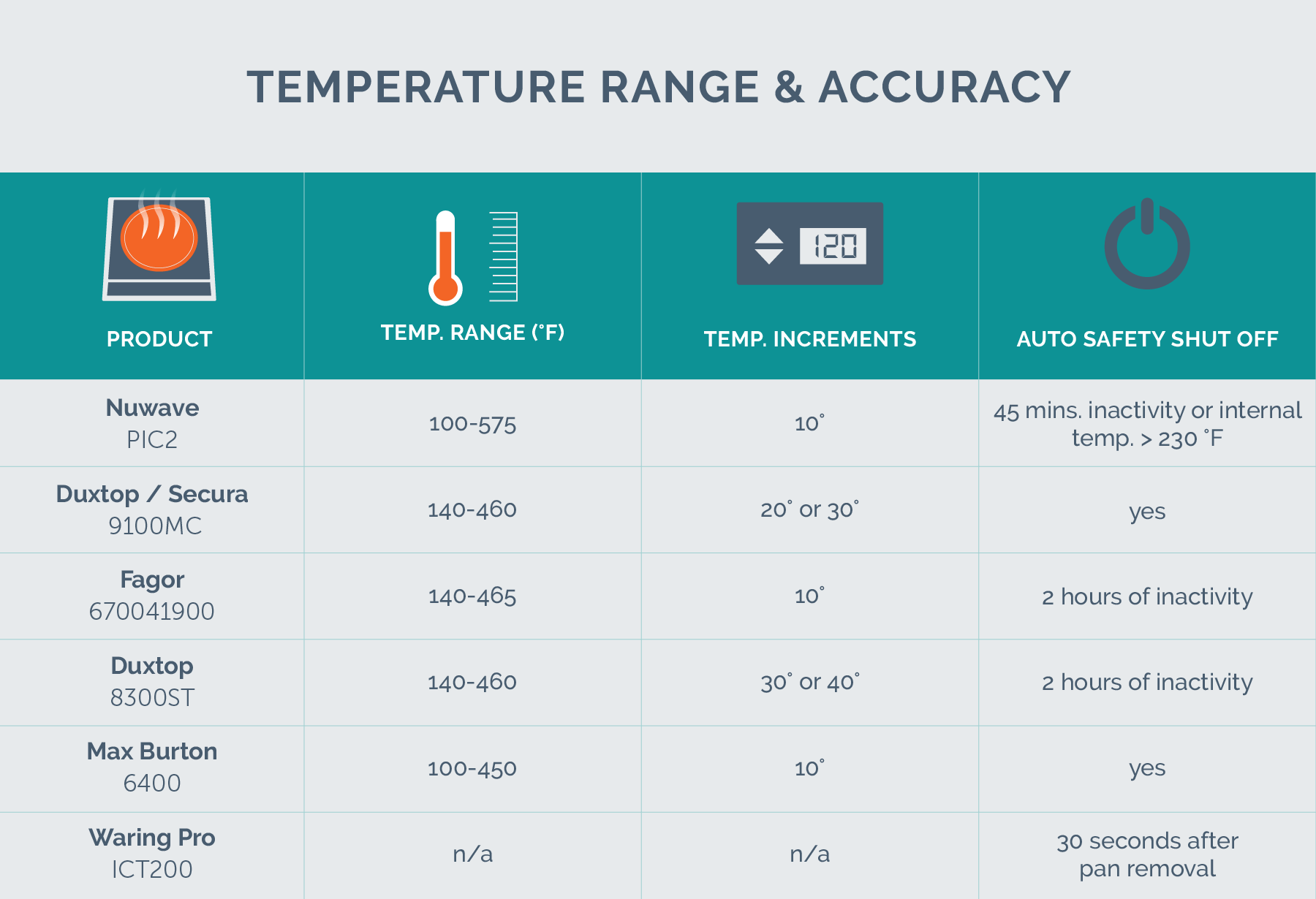
We wanted to know if we could keep something super heat sensitive like butter in a beautiful melted state without burning. We melted two tablespoons of butter in a room temperature cast iron skillet and set the temperature to 140°F for five minutes, or in the case of the Waring Pro – ICT200 cooktop which didn’t have specific temperature modes, we just chose power level “three” and were pretty much up a creek in trying to find a specific temperature.
SIMPLE & RELIABLE
Waring Pro - ICT200
Even with non temperature-specific power settings, the Waring Pro held its own in the butter test, proving sometimes simpler settings can still be effective.
The five other induction cooktops had a temperature mode varying in their incremental capacity. The best features were on the NuWave, Max Burton and Fagor, with precise ten degree temperature increments. The Duxtop 8300ST and 9100MC have temperature modes but the temperature jumps anywhere from 20-40°F, so we felt lucky to hit 140°F with both of these cooktops.
We were able to keep the butter golden and melted using the the Waring Pro (on power level 1), which only boasts power mode levels 1-8. This reminded us that there is a place for a simple cooktop that can do simple cooking, and some buyers might be at ease without having to think about exact temperatures.
Heating evenness – the pancake test
We set out to see how even the heat would be distributed with all six induction cooktops. We made a big batch of pancake batter and got cooking using our favorite cast iron skillet. We made sure the pan we used fit on the cooktop and did not hang over the circular pan line.
All six burners produced perfectly golden pancakes after the first one which is where we made any needed adjustments in temperature or power modes. We looked for the entire pancake being evenly golden brown without any light or dark spots which would indicate an uneven heat surface. The big lesson we learned here was that the pan matters and this is the beauty of induction. The heavier bottom the pan, the more even cooking will be.
Where there is strong bond between burner and pan, there will be a strong bond of temperature evenly heating whatever pan you have on the cooktop. A cast iron skillet is going to always have great heat distribution compared to a thin enamel coated pan. We looked for any surprises or anomalies, but what kept drawing our attention as we flipped those cakes was the ease of use (or not) for each cooktop, including the design, the buttons and display panel.
The NuWave started to make its way apart from its peers as we had more temperature control, programming capabilities and an extended maximum cook time (timer). Not to mention the round design felt nimble and light compared to the others.
The best portable induction cooktop: NuWave
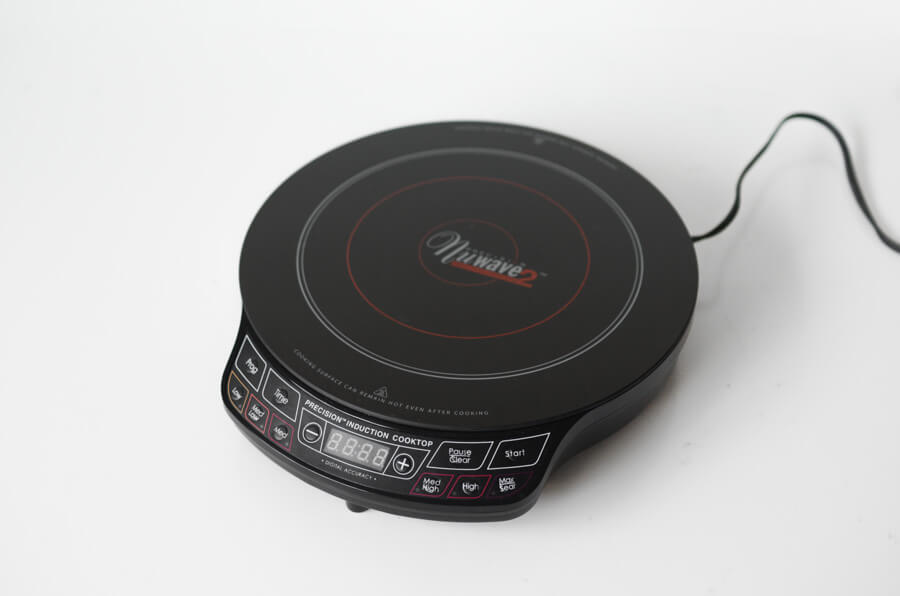
Of the six induction cooktops we tested, the NuWave – PIC2 cooked away the competition by its sheer capabilities. Even though the dimensions are similar to the other cooktops we tested, it felt more compact and less intrusive on our kitchen counter. With such robust capabilities, we were pleasantly surprised with how intuitive the display was. It didn’t take us more than a minute to figure out what buttons did what and how to get cooking.
With the broadest temperature range of all, 100-575°F, a maximum programmable cooking timer of 99 hours and sixty minutes, (the next closest was the Fagor and Waring Pro at 180 minutes), a programmable memory, the least amount of watts (the most energy savings), the lightest weight, 10°F temperature increment controls, six power modes, a sleek design and a reasonable price.
TOP PICK
NuWave - PIC2
The NuWave has an excellent set of usability and safety features at a great price point, making it an easy choice for most cooks.
With 61% of Amazon reviewers rating it five stars, we weren’t alone in our delight with this product. The NuWave is fast, sleek and most importantly capable to cook everything from the most delicate sauces to the hottest searing steaks.
We also appreciated its cautious approach to safety. The extra large vents in the back allow heat to escape more rapidly, keeping the cooktop cooler, all while not sounding any louder than the other six cooktops we tested. This is important because if the cooktop reaches an internal temperature of 230°F, the unit will shut off.
If forty five minutes passes without any buttons being pressed, it shuts off. If you want to program the cooktop to sear a steak for four minutes and then automatically lower the heat to deglaze the pan with some red wine, this cooktop has you covered. This was the only cooktop we tested that had these robust capabilities.
Key takeaways:
- The NuWave – PIC2 cooktop kept butter at a perfect melted state of 140°F (temp. measured with an infrared thermometer) without burning.
- Equipped with a programmable memory for pre-setting multiple step cooking tasks.
- Used only 1300 watts (the lowest out of all the cooktops we tested), this cooktop saves the most energy while allowing you to cook at the highest temperature out of all of them (575°F).
- The sleek, round design takes up less room than its rectangular shaped peers. The display panel is robust, yet intuitive and simple to use.
The runner up pick: Duxtop – 9100MC
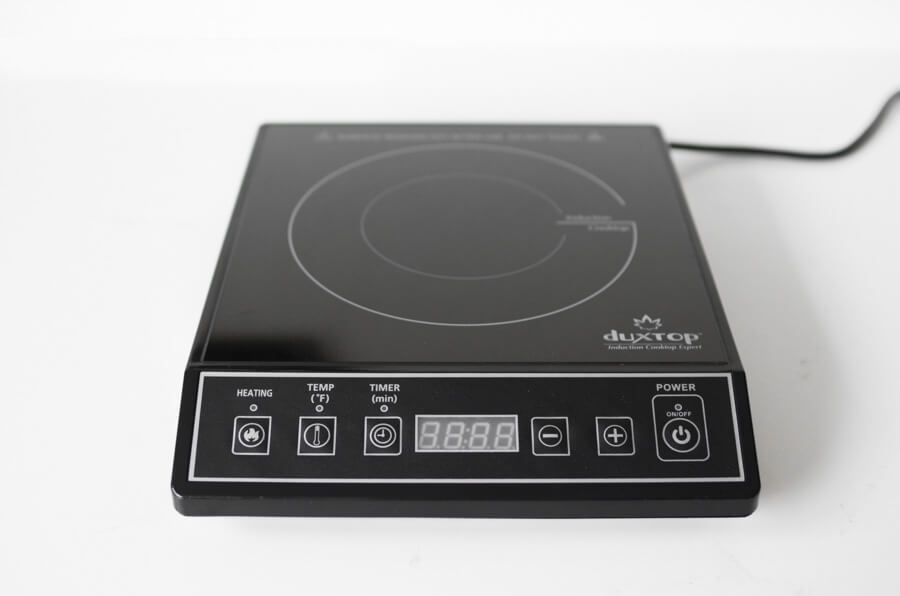
If we were to choose a runner up pick for the next best portable induction cooktop, we would choose the Duxtop – 9100MC 1800W portable induction cooktop.
SECOND BEST PICK
Duxtop - 9100MC
With it’s impressive cooking power modes and temperature capacity this fast response burner is simple, straightforward and a breeze to use.
We loved cooking on this cooktop and were impressed with it’s functionality and powerful cooking power modes. It has a generous temperature mode capacity (140-460°F), boiled quicker than any of the cooktops, four minutes, nineteen seconds and cooled in only 39 minutes compared to the NuWave’s 60 minutes. The display panel design is simple and straightforward with ten power mode levels and a 120 minute maximum cooking timer. All of this for a reasonable price of $69.99 on Amazon.
The Duxtop – 9100MC melted butter with ease, made perfectly golden pancakes on our hearty cast iron skillet and had a straightforward and intuitive control panel. While this cooktop doesn’t have the extensive programming capabilities or ten degree temperature increments that the NuWave has, we can’t help but feel that many cooks might not need those extra bells and whistles to have a great cooking experience.
Key takeaways:
- The Duxtop – 9100MC has a wide temperature mode capacity (140-460°F), for greater versatility in cooking.
- Boiled water in four minutes, nineteen seconds (fastest out of all the cooktops we tested).
- This unit was very simple with a straightforward display panel, making it very user-friendly.
- Ten power modes for accurate temperature control.
Other finalists we tested
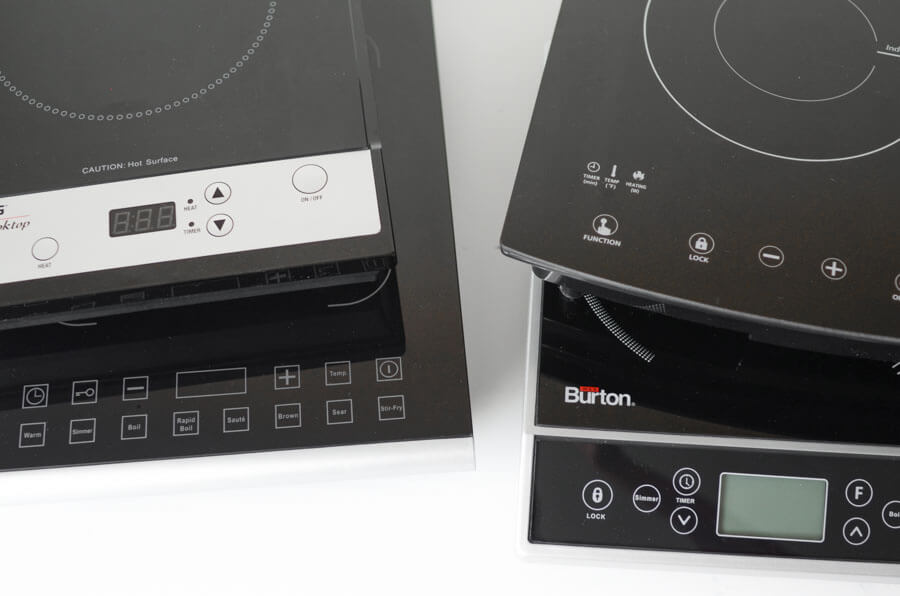
Fagor – 670041900
The most modern looking of all the cooktops we tested, the Fagor – 670041900 has a sleek black cooktop with a smooth touchpad that feels luxurious. In addition to a fairly wide temperature range of 140-465°F, the cooktop also has eight quick launch buttons, warm, simmer, boil, rapid boil, saute, brown, sear and stir-fry.
When we put the Fagor to the boil test, we used the “Rapid Boil” quick launch button and the results were less than rapid compared to the other cooktops we tested. It took the Fagor seven minutes, two seconds to boil but the Fagor was the clear winner of the cool down test, cooling in 31 minutes.
Duxtop – 8300ST
The Duxtop – 8300ST has a sleek design and simple to use, with ten temperature settings ranging from 140-460°F and ten power modes. We were initially impressed with the sleek, black design. The downside here is that the temperature increments are between 30 and 40 degrees so if you’re looking for accuracy this would not be the cooktop for you.
When we started testing and writing this article the Duxtop 8300ST was available new, but has since been taken out of production. There are a good amount of used units for sale on Amazon.
Max Burton – 6400
While we liked the bright blue backlighting on the display of the Max Burton – 6400, this was the only unit we tested where we actually had to read through the manual just to figure out how to use the cooktop. Once we read through the manual and figured out what buttons did what it was easy to use, but we liked the straightforward intuitive design of the other cooktops.
It has a temperature range of 100-450°F, with ten degree increments, making this the number two unit for temperature detail capacity after the NuWave, but we also missed the power mode buttons and this unit only has two: “simmer” and “boil”. For a price of $127.25 it just felt like other units had more bang for a significantly lower buck.
Waring Pro – ICT200
If you want a super simple cooktop where you don’t have to think about temperature details aside from power mode levels of one through eight, the Waring Pro – ICT200 might be the unit for you. The design and clicking buttons feel a bit cheap compared to the sleek touchpads of the Max Burton and Fagor, but the display is easy to use.
During the butter test, since the Waring Pro doesn’t have a temperature mode, we could not set the temperature to 140°F, so we tried to guess turning the power mode to level four and keeping a close eye on how the butter melted in the pan. Coming in at only $50.99 this is the most affordable new cooktop that would work for basic cooking.
The bottom line
When it comes to single burner induction cooktops, buyers are looking for a cooktop that balances performance and price. The NuWave – PIC2 portable induction cooktop came in as our first choice for its ability to deliver on performance and offering the most options for varying cooking techniques and projects.
While the Duxtop – 9100MC was also a great induction cooktop, once we considered the low wattage energy savings, the robust temperature range and programming ability of NuWave, it rose to the top as our clear winner.
Top Pick: NuWave - PIC2
The NuWave PIC2 is easily our top choice as it surpasses its peers in technical capabilities and is a joy to use.



ไม่มีความคิดเห็น:
แสดงความคิดเห็น